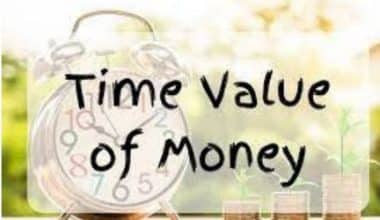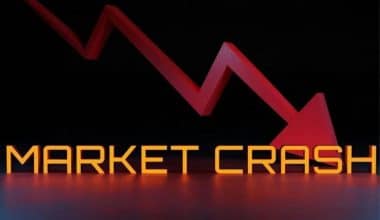The concept of mass-market is one we are familiar with as entrepreneurs but many are ignorant of its advantages, so, they seldom practice it. Many practice it but do not know the right term for it. This post is going to be enlightening, trust me!
If I said economies of large scale production, you will nod to the understanding of its concepts, right? Well, they are similar. In fact, we can say they are the same, however, no two concepts are exactly alike.
Let us begin our discussion on the mass market, its importance, examples, characteristics, and the products that can be mass-produced. The advantages and disadvantages will not be forgotten either.
What Is Mass Market in Business?
The term mass market refers to a market where goods are produced in large quantities for many end-users.
Furthermore, they are perceived as a group of people who specialize in common household products that many customers need. They have a large variety of people with needs.
Businessdictionary defines it as an unsegmented market in which products with mass appeal like aspirin, orange juice are offered to every customer through mass retail or independent stores and promoted through mass media.
It is different from the niche market, more like the opposite. How? We will tell you. The niche market focuses on a particular market segment and makes products specific to them. but the mass market focuses on customers with no identifiable preference and different backgrounds in a large market segment.
In other words, it uses mass distribution and mass media to reach the widest audience possible. The aim is to reach the highest number of customers.
The Evolution of Mass Marketing
Businesses have traditionally served fairly small geographic markets throughout history. The size of a company’s target markets was typically limited to the range of the entrepreneur’s personal mode of transportation.
Advances in transportation, such as trains and vehicles, opened the door to mass merchandiser distribution in the late 1800s and early 1900s. In the 1920s, radio transmissions enabled businesses to deliver promotional messages to huge, undifferentiated audiences at the same time, giving birth to the mass market concept and the first mass marketing strategies.
Do you need a Business Plan? Check our Business Plan Archives
What Are the Characteristics Of a Mass Market?
Before we go into the characteristics of a mass market, it is important we note that in a mass-market there are many producers. Because the customers who need the products are much, only one producer cannot manufacture all the market needs. For instance, only Unilever cannot produce all the toiletries a country like the US will use in a year.
Having established this, the key features are;
- The customers form the majority in the market
- Customer needs and wants are general and not specific
- Mass Market is known for higher production capacity (economies of scale)
- To be successful in this market, your product will have low cost, mass promotion, distribution and be a leading brand
Why is Mass Market Important
We all know that the reason for being in the market is to make sales. Then, your ability to get customers makes you successful.
In the same vein, the mass market is important because it exposes you to more customers and an unsegmented market. The king in this market becomes those with great promotions, low-operation costs, and very importantly, great brands.
Why this concept is important is because it gives every producer a fair playing ground for improvements and endless opportunities. The customer’s taste is not even specific.
So, any brand that can distinguish its product at a lesser price is already ruling. There is room for innovation and healthy competition.
Here, the marketing is to everyone and they focus on selling daily essential products at a low price in order to get the highest number of sales and then get brand exposure.
Mass Market Advantage & Disadvantages
Advantages
The main advantage of this marketing technique is the sales of essential commodities, at a low price, using mass production, and then it gains the company enough brand exposure.
Another is that it exposes brands to cost-efficient marketing because of the goods in general, so the advert is not streamlined to only one demography or market segment. The advert reaches numerous customers with a single message and one push.
Also, their production cost is reduced and maybe even be cheaper than those producing or target markets because of mass production and low advert cost. For instance, a bulk purchase may even warrant discounts.
Furthermore, brand awareness is created.
Disadvantages
The saying that everything has a disadvantage is particularly true as we will see with this.
Many customers are getting tired of the one product fit for all that mass-market pushes. They seek to have products specific to their need.
Also, the general mode of advertisement is causing resentment for some products. Culture and location have an impact on the way an advert is received. A mass marketing campaign may be successful in one region while failing to make an impression on consumers in another.
Because of these, the efforts to generate high volume may lead to lower returns.
Another disadvantage is that it takes the power of monopoly into the hands of large companies. Smaller companies who are into niche marketing will have to spend more to be noticed.
Read Also: Lead Generation: Definition, Process, Tools, and Strategies (Simplified )
Mass Marketing Techniques
There are quite a number of techniques mass marketers use to appeal to a larger audience. We will list just a few.
The traditional advertising method on media like television, radio, and the internet. Even Handbills and billboards.
In addition, Guerrilla marketing is another commonly used method. This method produces adverts that capture the attention of a large audience with exciting and memorable messages while still engaging the customers. We have a post dedicated to this marketing technique. Do well to read it up.
Mass Market Products
Several FMCG products like soaps and detergents fall into this category.
Body deodorants, as well as many personal hygiene products like toothpaste, shaving sticks, female tampoons, etc.
An example of a brand that mass markets are Coca-Cola.
What is a Mass Market Example?
This marketing technique is majorly used by big organizations that do massive productions.
Think about a product that nearly every person uses: toothpaste.
Brands like Colgate use mass marketing by running commercials on TV, magazine ads, and on other channels like social media and billboards. Oftentimes, they partner with big-name celebrities so that the consumer’s brain links a need- in this case, toothpaste with a celebrity they like.
Another example includes deodorant ads like Nivea.
Luxury vs. Mass-market Retailers
Luxury shops, as opposed to mass-market merchandisers, sell products aimed at wealthy people who purchase upmarket stuff. These things are typically out of reach monetarily for the average customer, yet ambitious consumers may purchase them nevertheless. Luxury stores are connected with higher quality and superior customer service. Luxury retailers include Bergdorf Goodman, Barney’s, Tiffany & Co., and Saks Fifth Avenue.
In the United States, item sales through mass-market merchants account for a sizable amount of the revenue earned by consumer goods and grocery purchases. Smaller merchants or mom-and-pop stores that service communities and local regions may be preferred in other countries. However, as more cities throughout the world become more densely populated, mass-market retailers may embrace the opportunity to establish themselves in such areas.
Conclusion
Mass marketing is very effective for innovative new products. This increases awareness and gives them loyal customers.
One piece of advice, before you go into productive mass goods, just be sure to check the demand for that product so you do not waste your efforts.
Lastly, certain companies may use mass marketing more than you’ll need to. Just find the right strategy and you’ll be just fine!
Mass Market FAQ’s
Is Apple a mass market?
Apple items are high-end, high-end products that are at the top of the mass market. The components of an Apple Watch are just roughly $80 in terms of value/cost. Their competitors produce comparable products.
What is a mass market example?
Big-box stores like Target, Sam’s Club, and Best Buy are examples of mass-market retailers, as are brands like Levi Strauss and Gap, as well as e-commerce sites like Amazon. Mass-market retailers include supermarkets, pharmacies, mass merchandise, and warehouse businesses.
What is a disadvantage of mass marketing?
The primary downside of adopting mass marketing is that it places all of your eggs in one basket. Although mass marketing can be extremely effective for large corporations, market changes can and frequently do occur, leaving smaller to mid-sized businesses exposed to the consequences.






